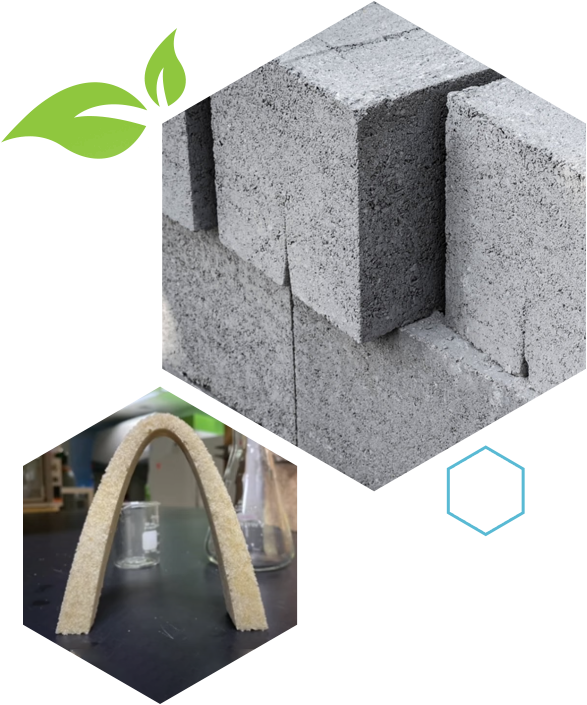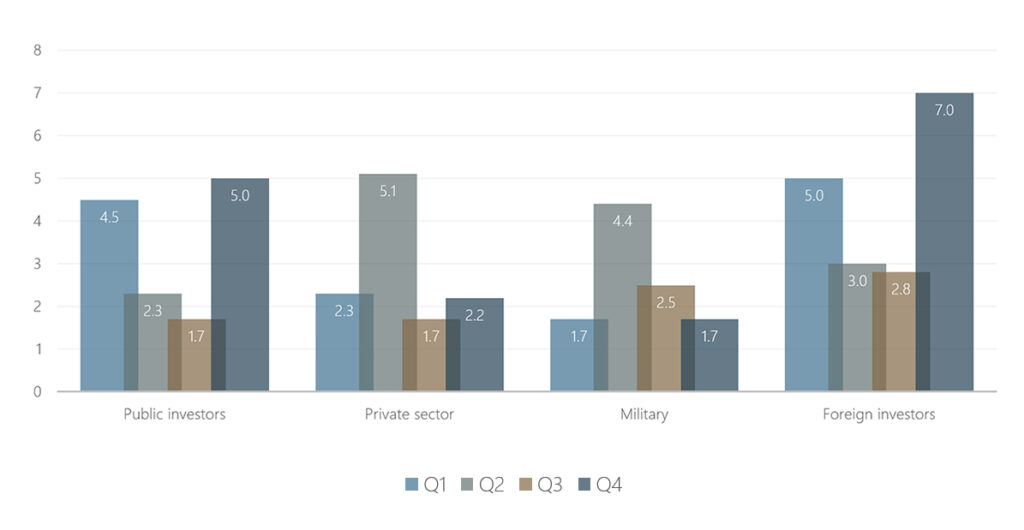Enzymatic Construction
Material (ECM)

Enzymatic Construction Material is a self-healing and carbon-negative alternative to concrete.
Concrete is a great building material and the most widely used man-made material in existence. But, it also has a massive carbon footprint as the source of about 8% of the world’s carbon dioxide (CO2) emissions,
according to the think tank Chatham House. If the concrete industry were a country, it would be the 3rd largest emitter in the world – behind China and the US. The Biden-Harris Administration’s goal is to reduce emissions by over 20B tons in the next 7 years. A noble pursuit. But it didn’t get any easier with the passing of a huge infrastructure bill. ECM can eliminate concrete’s carbon footprint and it sequesters 112 lbs of CO2 per cubic yard. Implemented worldwide, ECM will reduce emissions by 3.7B
tons – over 18% of the Global Emission Reduction Goal! For the first time in history, more infrastructure will be good for the environment!
Carbon Negative and Healable Concrete


problem
Concrete is britle and prone to cracking from exposure to water, thermal cghanges, stress, road salt, flaws in design.

Vision
CA enzyme, which is added to the concrete powder acts as a catalyst that causes atmospheric CO2 to create calcium carbonate crystals, whose matrix is similar to that of concrete.


Healable
Cracks in concrete are inevitable, however cracks in ECM can easily be healed and the structure regains up to 97% of its original strength.

Strategy
When a small crack froms in the enzymatic concrete, the enzyme inside the concrete connect with CO2 in the air, triggering the growth of a new matrix that fills in tha crack.

Benefits
Self-healing concrete could extend the life of a structure from 20 years, for examples, to 80 years
Our Enzymatic Videos
Coming soon…a video demonstration showing the making of ECM.
Carbon Negative and Self-healing ECM
1 cubic yard of Enzymatic Construction Material (ECM) consumes 115 lbs of C02, whereas 1 cubic yard of concrete emits 400lbs of C02! We’ve most recently achieved an MPA of 30, equivalent to about 4350 psi which means we could potentially use ECM for driveways, patios and sidewalks; in addition to concrete roof tiles, stucco and load-bearing concrete blocks. Implemented worldwide, ECM could reduce emissions by 18% of the Global Emivssion reduction goal!

Area of use of Carbon-Negative
Construction Materials

